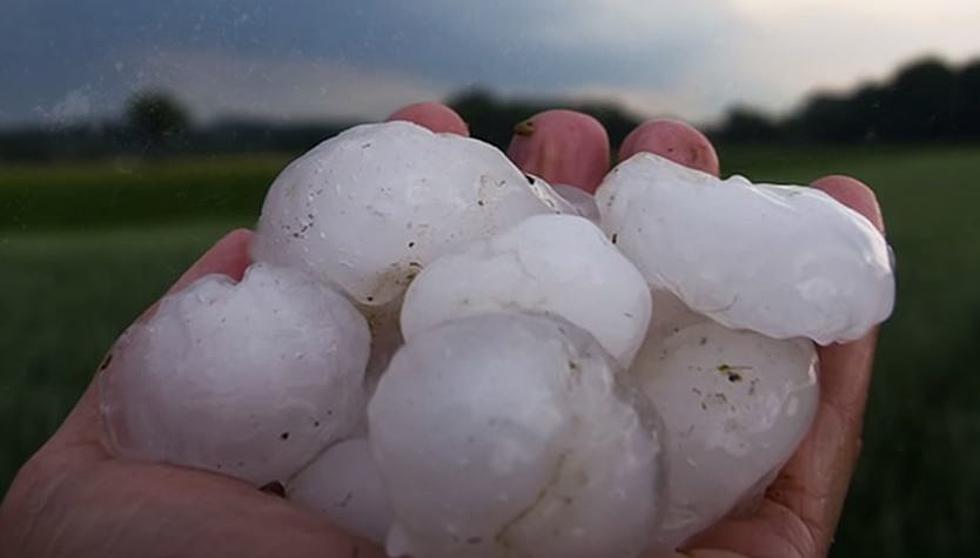
Weather Service Reveals How They Estimate Hailstone Size
Forecasters at the National Weather Service Office in Lake Charles Louisiana spend their waking hours keeping you and me ahead of the storm. During the overnight hours, many weather service offices across the nation have been on their toes as another spate of strong to severe storms has spread not only across Louisiana but to other states as well.
When the big storms hit the damage from tornadoes and straight-line winds is often what makes the headlines on your local or national news. But there is another weather phenomenon associated with thunderstorms that can be quite damaging and cause bodily harm and even death.
What Causes Hail to Form in Thunderstorms?
Thunderstorms are very violent. There is a lot of energy that is being manipulated in the atmosphere when we see a thunderstorm. Part of the energy of the storm is in the form of strong updrafts of air. These updrafts carry water droplets from storm clouds high into the atmosphere where they freeze.
Once the water droplet has become too heavy for the updraft to keep afloat it falls as ice. Quite often this cycle is repeated time and time again with stronger storms and those layers of ice keep getting larger and larger until they are just too heavy and fall to the ground as hailstones.
What Do The Different Hailstone Sizes Mean?
Quite often during a post-storm analysis, you'll hear a meteorologist describe a hailstone as "pea size" or "dime size". Believe it or not, those are official measurements according to the National Weather Service. Just like the Federal Government uses Waffle Houses to determine hurricane damage, the Weather Service uses common items to help describe the size of hailstones to you and me.
Here is the official list and sizes according to the National Weather Service:
- Pea = 1/4 inch diameter
- Mothball = 1/2 inch diameter
- Penny = 3/4 inch diameter
- Nickel = 7/8 inch
- Quarter = 1 inch — hail quarter size or larger is considered severe
- Ping-Pong Ball = 1 1/2 inch
- Golf Ball = 1 3/4 inches
- Tennis Ball = 2 1/2 inches
- Baseball = 2 3/4 inches
- Tea cup = 3 inches
- Softball = 4 inches
- Grapefruit = 4 1/2 inches
Hailstones can not only hurt you if they hit you but some of the larger chunks of ice could even kill you with a direct hit. Death by hailstone is a very rare event. Since 2000 only four confirmed deaths have been blamed on the falling ice. NOAA estimates the damage from hail to be at least one billion dollars annually. So the falling ice is certainly another destructive component of a thunderstorm.
Most damage from hailstorms is reported in the form of damage to cars or damage to roofs. Hopefully, your insurance company will cover that but be ready to go through a lot of red tape because sometimes "good neighbors don't like to pay claims". And here's an important note for anyone hoping to recoup losses from an insurance company caused by hail, make a note of the date and exact time the damage occurred.
10 Snowiest Cities in Louisiana
Gallery Credit: Jude Walker
More From News Talk 96.5 KPEL




